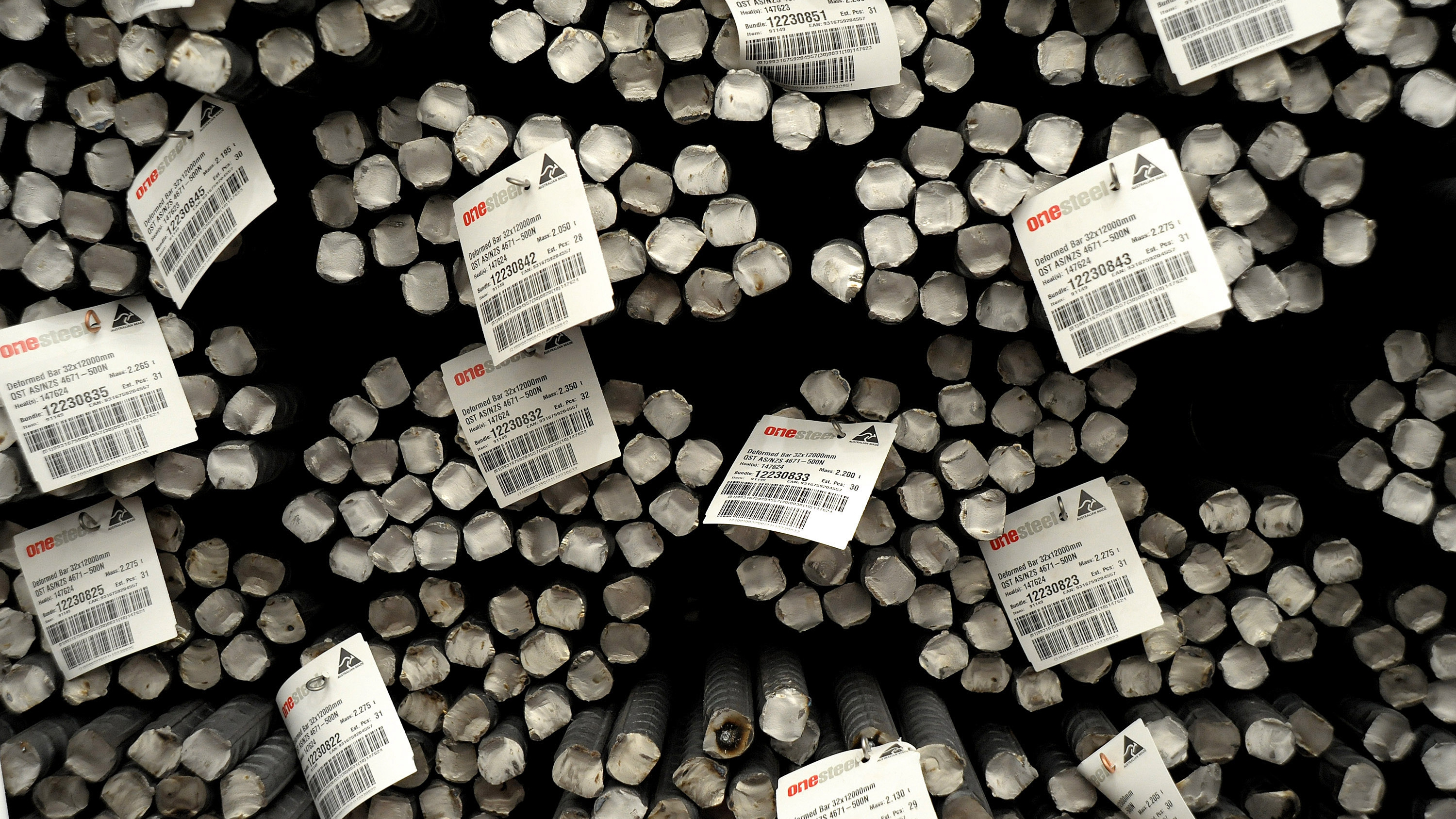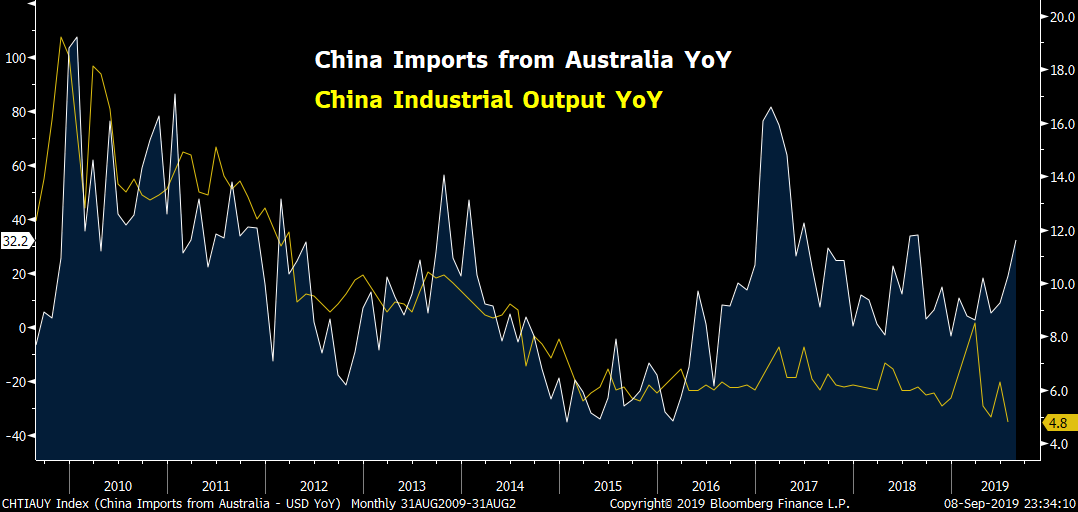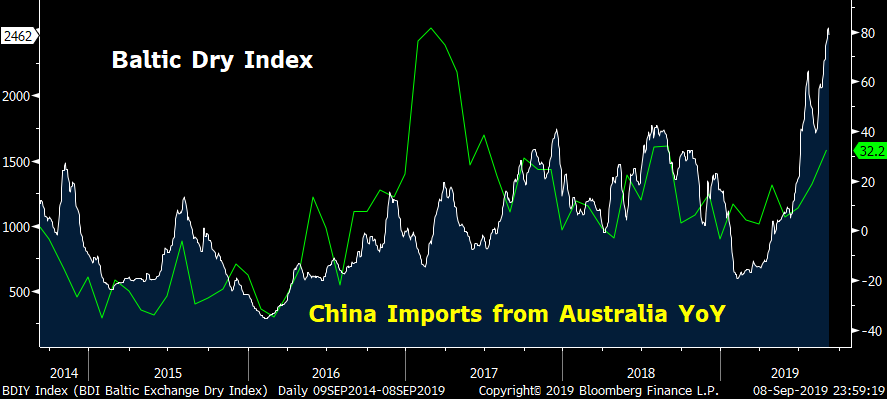

VCG Photo
Editor's Note: Jimmy Zhu is chief strategist at Fullerton Research. The article reflects the author's opinion, and not necessarily the views of CGTN.
China's August imports from Australia grew at their fastest pace in the past 12 months, a sign that demand for raw materials is increasing even amid a synchronized global slowdown.
What does Australian imports surge mean?
For the month of August, China's purchases from Australia grew 32.2 percent from a year ago, well above the average growth of 5.7 percent over the last five years. A surge in imports from Australia is a reliable indicator that China’s industrial demand is starting to pick up, since most of the products Australia sells to China are raw materials.
The chart below shows that China's industrial output has persistently moved in line with imports from Australia over the last 10 years. Iron ore is a major component in steel production, making it second only to oil when it comes to acting as an indicator for the global economy.

Source: Bloomberg
Furthermore, China is the world's largest commodity buyer, so its import volume will have some impact on oceangoing dry bulk transport vessels. The Baltic Dry Index (BDI) was up by 27.3 percent to 2,378 points last month, rising to its highest level since November 2010. BDI is another index recognized globally as a leading indicator of future economic growth, although its current performance seems to be contradicting the current backdrop of the global economy. More importantly, the BDI has also been moving in tandem with the growth of Chinese imports from Australia.

Source: Bloomberg
Still, headline imports growth dropped 5.6 percent last month, from a revised 5.3 percent fall in July. Together with the official manufacturing PMI sitting below 50 for a fourth consecutive month, it shows overall domestic industrial demand remains soft for the time. Against such a backdrop, the surge in imports from Australia could be a result of fiscal stimulus kicking in, possibly through infrastructure projects getting underway.
Fiscal stimulus could be much more necessary now than monetary measures
For fiscal and monetary stimulus, the argument about which is better never ends. But for now, fiscal measures work better for many major economies, including China. The recent global slowdown has been mainly driven by the escalation in U.S.-China trade tensions, and business owners around the world are become increasingly cautious about expansion, a mood being reflected in China's exports numbers. China's exports growth unexpectedly contracted by one percent last month, down from 3.3 percent growth in July. That fall came as most of China’s major trading partners’ manufacturing PMIs came below the key threshold level of 50, including the U.S. ISM factory PMI.
Monetary easing can be considered as a supply-side stimulus, as the measures tend to offer more credit into the real economy. When business owners start to feel the pinch of increasing uncertainty due to trade policy, they can't be expected to have much enthusiasm to apply for loans even at much lower interest rates. The U.S. is a great example here. Its 10-year government bond yield slumped by around 50bps since the beginning of the second half of the year, and while the Fed started cutting rates in July, these lower rates didn’t help U.S. manufacturing activity at all.
While persistently slow global demand continues to weigh heavy, demand-side stimulus, such as rolling out more fiscal policies, may be more effective in offsetting external weaknesses. One of the key advantages of fiscal policy is that it can target certain industries and investments to boost production activities, areas where monetary policy struggles to be effective.
China will also release its August credit data this week, and the figure for social financing will serve another important gauge as to whether fiscal measures have been accelerated. Aggregate financing in July stood at 1.01 trillion yuan, and the market expects a 1.6 trillion-yuan figure for the month of August.

Copyright © 2018 CGTN. Beijing ICP prepared NO.16065310-3
Copyright © 2018 CGTN. Beijing ICP prepared NO.16065310-3